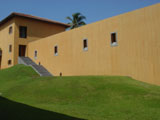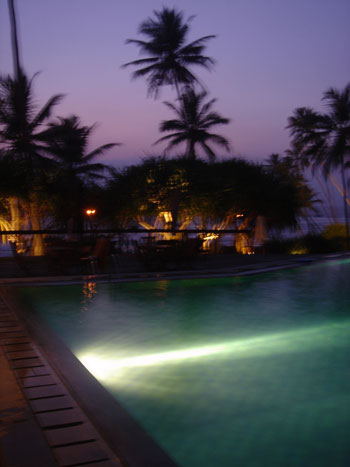

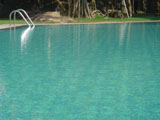

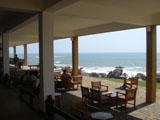
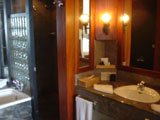

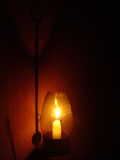
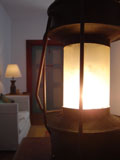
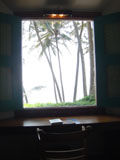


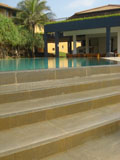
|
THE LIGHTHOUSE
HOTEL Tel: +94-91-2224017-20 www.jetwing.net/lighthouse/main.html DZ 200 US $ |
|
ARCHITEKTUR ANMERKUNGEN: In spite of the downturn
in tourism, the Lighthouse Hotel was commissioned by Herbert Cooray
in 1995 for his travel company Jetwings. Cooray's father had been
the contractor for the Carmen Gunasekera House in 1958, and the
Coorays had built a number of Bawa's projects before becoming successful
developers and hoteliers in their own right. The hotel is sited
on a rocky promontory once occupied by a magistrates' circuit bungalow,
and sits tightly between the main road and the sea about a mile
to the north of Galle. The sea is inhospitable but the views are
stunning. The main entrance and reception buildings of the hotel
hug the southern tip of the ridge and offer views towards the Galle
fort, the entrance and service points being housed within rubble
retaining walls that enclose the lower slopes of the rock. The strategy is to both confront the relentless crashing of the waves and provide contrasting areas of shelter and tranquillity. No single space is self-contained or complete: each is in part the consequence of a previous space and the anticipation of a subsequent one; each retains links with its neighbours-and with the outside so that the eye is continually invited to explore. The architecture itself is muted, but offers subtle memories of Moorish palaces, ocean liners, ancient manor houses and colonial villas. Quelle: Robson, David. 2002. Geoffrey Bawa: The Complete Works. London: Thames and Hudson |

